
Sebastián Francisco de Miranda y Rodríguez de Espinoza, commonly known as Francisco de Miranda, was a Venezuelan military leader and revolutionary who fought in the American Revolutionary War, the French Revolution and the Spanish American wars of independence. He is regarded as a precursor of South America's liberation from the Spanish Empire, and remains known as the "First Universal Venezuelan" and the "Great Universal American".

The national flag of Colombia symbolizes that Colombia gained its independence from Spain on 20 July 1810. It is a horizontal tricolor of yellow, blue and red. The yellow stripe takes up a half of the flag and the blue and red take up a quarter of the space each.

The national flag of Ecuador, which consists of horizontal bands of yellow, blue and red, was first adopted by law in 1835 and later on 26 September 1860. The design of the current flag was finalized in 1900 with the addition of the coat of arms in the center of the flag. Before using the yellow, blue and red tricolor, Ecuador's former flag had three light blue stripes and two white stripes with three white stars for each province of the country.The design of the flag is very similar to those of Colombia and Venezuela, which are also former constituent territories of Gran Colombia. All three are based on a proposal by Venezuelan General Francisco de Miranda, which was adopted by Venezuela in 1811 and later Gran Colombia with some modifications. There is a variant of the flag that does not contain the coat of arms that is used by the merchant marine. This flag matches Colombia's in every aspect, but Colombia uses a different design when her merchant marine ships are at sail.
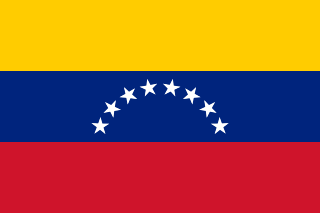
The current eight-star flag of Venezuela was introduced in 2006. The basic design includes a horizontal tricolour of yellow, blue, and red, dating to the original flag introduced in 1811, in the Venezuelan War of Independence.

Coro is the capital of Falcón State and the second oldest city in Venezuela. It was founded on July 26, 1527, by Juan de Ampíes as Santa Ana de Coro. It was historically known as Neu-Augsburg by the German Welsers, and Coro by the Spanish colonizers and Venezuelans, the city and buildings were built during the Spanish Empire. It is established at the south of the Paraguaná Peninsula in a coastal plain, flanked by the Médanos de Coro National Park to the north and the Sierra de Coro to the south, at a few kilometers from its port in the Caribbean Sea at a point equidistant between the Ensenada de La Vela and Golfete de Coro.
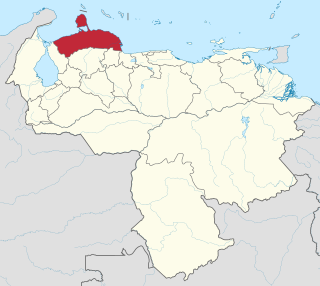
Falcón State is one of the 23 states of Venezuela. The state capital is Coro.

Nikolaus Federmann was a German adventurer and conquistador in what is modern-day Venezuela and Colombia. He is a significant figure in the history of Klein-Venedig (1528–1546), the concession of Venezuela Province that Charles I of Spain granted to the Welser banking family and the foundation of Santafe de Bogotá.
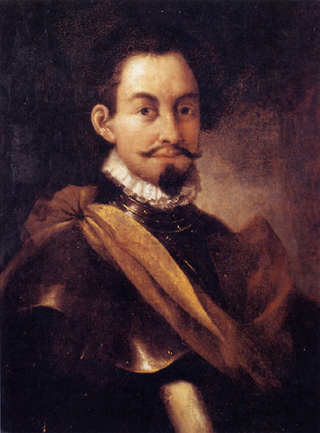
Philipp von Hutten was a German adventurer and an early European explorer and conquistador of Venezuela. He is a significant figure in the history of Klein-Venedig, the concession of Venezuela Province to the Welser banking family by Charles V, Holy Roman Emperor and King of Spain.

The cultures of Venezuela are diverse and complex, influenced by the many different people who have made Venezuela their home. Venezuela has distinctive and original art, literature and music.

El Tocuyo is a fertile valley and city in west-central Venezuela at 622 m (2,041 ft) elevation. It is located in south-central Lara State about 60 km southwest of Barquisimeto. The town of El Tocuyo was founded by Juan de Carvajal in 1545 on the banks of the Tocuyo River and it was the administrative capital of Venezuela Province from 1546 to 1548. Its original name was Nuestra Señora de la Pura y Limpia Concepción del Tocuyo. El Tocuyo is now just the municipal seat of Morán. Its population is 41,327 (2001).

Klein-Venedig or Welserland was the most significant territory of the German colonization of the Americas, from 1528 to 1546, in which the Welser banking and patrician family of the Free Imperial Cities of Augsburg and Nuremberg obtained colonial rights in the Province of Venezuela in return for debts owed by the Holy Roman Emperor Charles V, who was also King of Spain. In 1528, Charles V issued a charter by which the House of Welser possessed the rights to explore, rule and colonize the area, also with the motivation of searching for the legendary golden city of El Dorado. The venture was led at first by Ambrosius Ehinger, who founded Maracaibo in 1529. After the deaths of Ehinger (1533) and then his successor Georg von Speyer (1540), Philipp von Hutten continued exploration in the interior, and in his absence from the capital of the province, the crown of Spain claimed the right to appoint the governor. On Hutten's return to the capital, Santa Ana de Coro, in 1546, the Spanish governor Juan de Carvajal had von Hutten and Bartholomeus VI. Welser executed. King Charles V revoked Welser's charter.
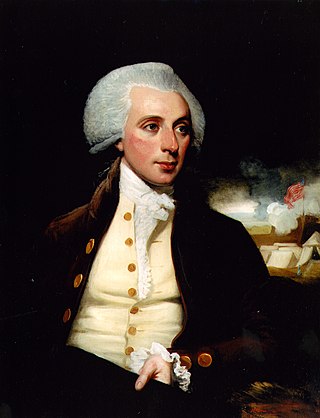
William Stephens Smith was a United States representative from New York. He married Abigail "Nabby" Adams, the daughter of President John Adams, and so was a brother-in-law of President John Quincy Adams and an uncle of Charles Francis Adams Sr.
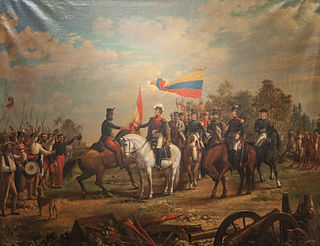
The Battle of Araure was fought during the short-lived Second Republic of Venezuela on 5 December 1813, in the city of Araure in Portuguesa State, Venezuela. Simon Bolivar's force defeated General José Ceballos.

The Roman Catholic Archdiocese of Coro is a Latin metropolitan archdiocese in western Venezuela.

The "Casa de Oración Hebrea", mostly known as the Coro Synagogue, is a synagogue in the city of Santa Ana de Coro, Falcón, Venezuela, a city located near the Caribbean Sea coast and the Dutch island of Curaçao; it is known as one of the oldest synagogues in Latin America.
Founded in 1527 and located in the northwestern Falcón state of Venezuela, the city of Coro and its Port, La Vela de Coro in the Caribbean Sea, was added to the list of UNESCO World Heritage sites in 1993, the first for its country.
German Venezuelans are Venezuelan citizens who descend from Germans or German people with Venezuelan citizenship. Most of them live in Caracas, Maracaibo, Valencia, Colonia agrícola de Turén, El Jarillo, and Colonia Tovar where a small-reduced and decreasing minority of people speak the Colonia Tovar dialect, a German-derived dialect from their ancestry, and the Spanish language.
Spanish expeditions led by Columbus and Alonso de Ojeda reached the coast of present-day Venezuela in 1498 and 1499. The first colonial exploitation was of the pearl oysters of the "Pearl Islands". Spain established its first permanent South American settlement in the present-day city of Cumaná in 1502, and in 1577 Caracas became the capital of the Province of Venezuela. There was also for a few years a German colony at Klein-Venedig.

Tourism in Venezuela has been developed considerably for decades, particularly because of its geographical position, the variety of landscapes, the richness of plants and wildlife, the artistic expressions and the privileged tropical climate of the country, which affords each region throughout the year. Since 2013, the country is having a very severe economic and political crisis affecting tourism all over the country.

The Cathedral Basilica of St. Anne is a cathedral and basilica located in Coro, Venezuela.

















